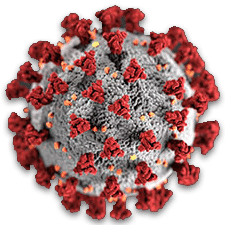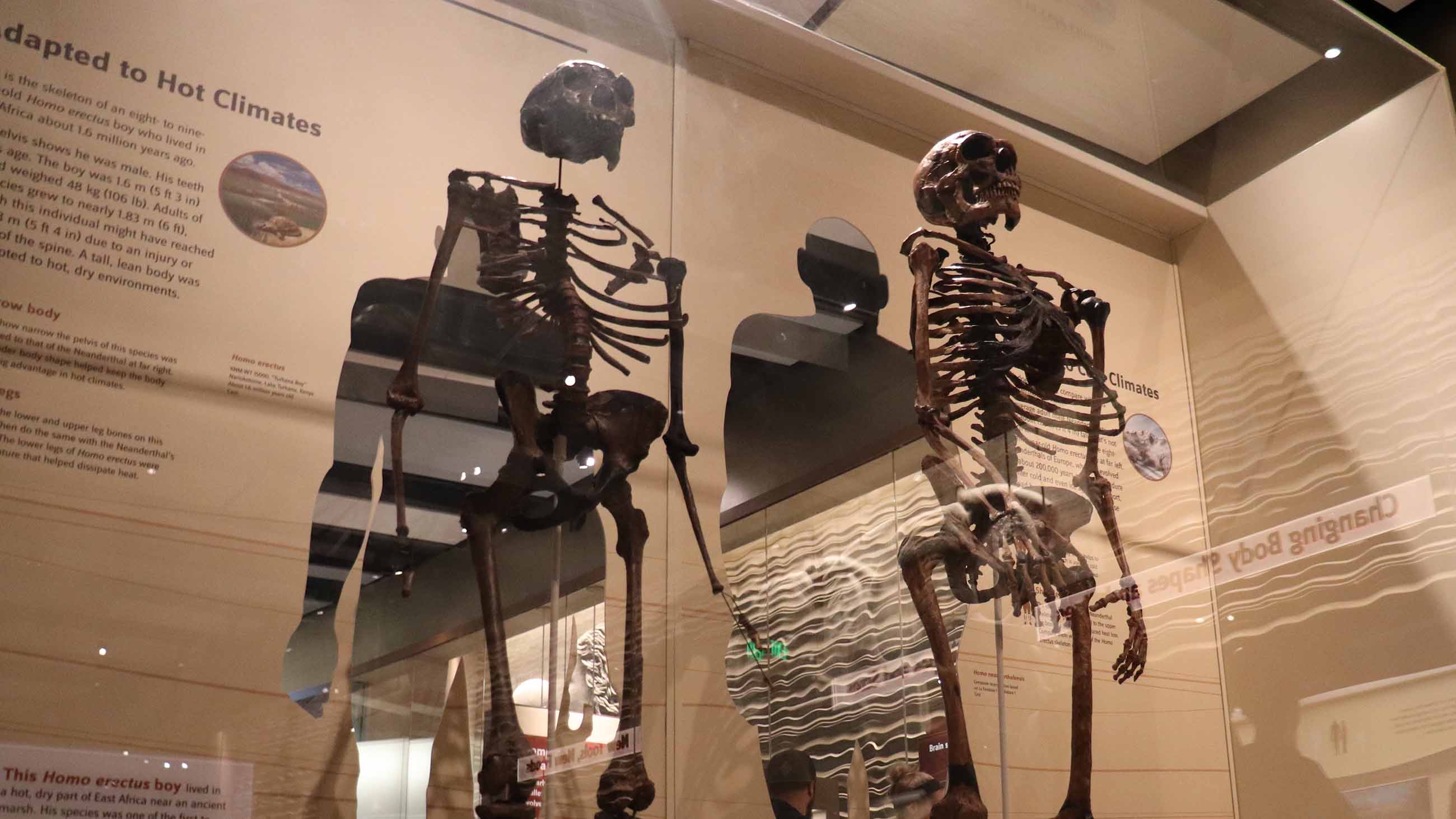In early March, the Chinese Academy of Sciences’ National Science Review published a peer-reviewed study titled “On the Origin and Continuing Evolution of SARS-CoV-2.” The authors argued that the various strains of SARS-CoV-2, the coronavirus that causes Covid-19, could be grouped into two clusters: An “L” type, which was predominant during the early weeks of the outbreak in Wuhan, and an “S” type, which could be distinguished from the L type by only two genetic changes. The researchers speculated that the L type was “more aggressive” and more contagious than the S-type strains that had become more common outside of China. The implication was that Covid-19 might not spread as quickly throughout the rest of the world as it had in Wuhan.
Although this analysis was based only on changes in mutation frequency in around 100 sequenced genomes, it caught on in the media. While some press outlets contextualized the study alongside its many criticisms, others extrapolated from it to predict that SARS-CoV-2 was evolving to become more benign, a dangerous oversimplification of a long-studied idea that many pathogens may evolve reduced severity after initial outbreaks.
These types of narratives — a Covid-19 brand of pseudoscience — have cropped up often in recent months. Just last week, media outlets swarmed to a non-peer-reviewed report of a mutation that was billed as an indication that SARS-CoV-2 populations are becoming more transmissible, and too diverse for any one vaccine to work against.
For the most part, respected evolutionary biologists have chosen to avoid weighing in on these controversies, opting instead to remain above the fray. This is surprising considering that evolutionary biologists are accustomed to debating creationists, and to the art of public discourse around contentious ideas. Their relative silence leaves a gap that less restrained commenters have rushed to fill: Seemingly every mutation in the novel coronavirus has been spun as a sign that the virus is either adapting to better reproduce and spread in its environment or becoming less harmful.
While genomic differences between different strains of the novel coronavirus are stark facts, our interpretation of those differences can be a wellspring of controversy. And right now, the media coverage of SARS-CoV-2 suggests that the American public fundamentally misunderstands how evolution works — and how to distinguish between two of its key driving forces, adaptation and genetic drift. The latter represents a gradual accumulation of chance events that have no true consequences for how a virus behaves. And when a particular genetic strain appears to make great leaps in its ability to thrive and proliferate, it’s often genetic drift, not adaptation, that’s at play.
Researchers at the University of Glasgow drove this point home with a letter and formal critique of the National Science Review study on L and S type viruses. The Glasgow researchers argued that among the study’s many technical faults was a fundamental one: The study had failed to test whether the overabundance of the L type could have occurred without changes in the virus’ infectiousness. In other words, the researchers had failed to consider a null model — a model that would have tested whether the patterns they saw in the data could have been caused by random chance.
In casinos, null models give the lie to the notion of “lucky days,” showing us that each play is independent of the others: A slot machine is just a machine, and contains about as much magic as the flip of a coin. In science, null models can be used to discipline inferential leaps. They are a reminder that, in most cases, the headline-grabbing explanations are less likely to bear out than the boring ones.
Null models are especially critical for making sense of the mounds of genetic information being collected about SARS-CoV-2 evolution. Evolutionary biologists use the term “genetic drift” to capture the roles of chance and luck in an organism’s survival and reproduction, and any good null model must account for these effects of chance. While random, the accumulation of genetic drift across generations can have some surprising consequences; one string of evolutionary luck can cause a biologically insignificant, or neutral, mutation to become predominant in a population. The revelation that most genetic differences among species are neutral was controversial for decades but has now become conventional wisdom. The lesson it offers for the present moment is that most commonly encountered mutations of the novel coronavirus will have absolutely no bearing on the pathogen’s ability to infect or sicken humans.
That last point was seemingly lost on a recent study in the prestigious American journal Proceedings of the National Academy of Sciences. The study’s authors attempted to construct a detailed network showing the genetic lineages of 160 different SARS-CoV-2 genomes and how those strains spread throughout the world. Subsequent scientific critiques focused on the study’s glaring technical issues. But what sparked a media frenzy was the authors’ suggestion that a particular group of strains, the “Wuhan B-type virus,” might be “immunologically or environmentally adapted to a large section of the East Asian population, and may need to mutate to overcome resistance outside East Asia.” The authors mentioned null models only briefly and on equal footing with more exotic hypotheses of differences in spread. By the time the speculative interpretation reached the Daily Mail, it had devolved into an even wilder assertion: “Scientists believe the virus … is constantly mutating to overcome immune system resistance in different populations.”
When mutations hitch long-distance rides — as in an intercontinental flight — then neutral genetic changes can get balkanized into distinct geographical patches that resemble a meaningful pattern, leading the careless to jump to provocative, often unjustified conclusions about viral spread. Scientists may label these interpretations as speculative, but they service poorly-informed chatter suggesting that a vaccine couldn’t possibly work, that SARS-CoV-2 may have hopped into other species from dogs, or that a mutant virus will foment a much worse second wave of infections. Amid public fears surrounding how bad the outbreak will get, a nuanced understanding of how Darwinian evolution works across various contexts is no match for the troll bot and rogue doctor who propagate half-baked evolutionary ideas at society’s expense.
 |
Thoughts or questions on Covid-19? |
The fact is, viral genomes, although different from those of humans or other species in many ways, seem to obey the same evolutionary principles. One of those principles is that most genetic changes that become prevalent in a population do so despite having little or no effect on individuals’ behavior.
To be clear, these genetic changes are nevertheless worth studying: When interpreted correctly, they can reveal the movement of a virus through a population, and help researchers characterize local outbreaks. Also, some mutations may translate into meaningful changes in our relationship with this still-new pathogen.
But notions that SARS-CoV-2 will evolve into the Andromeda Strain or become as benign as the common cold prey on our ignorance and fear. Scientists, accustomed to spending years looking for certainty, can often lead best by explaining what we don’t yet know. And right now — while we are still struggling to measure the number of people infected with SARS-CoV-2 and collect other required data for an informed null model — we are ill-equipped to separate the signals of natural selection from the noise of genetic drift.
Jeremy Draghi studies the theory of evolution and is an assistant professor in the Department of Biological Sciences at Virginia Tech.
C. Brandon Ogbunu studies the evolution and ecology of infectious diseases and is an Assistant Professor in the Department of Ecology and Evolutionary Biology at Brown University











Comments are automatically closed one year after article publication. Archived comments are below.
Is it possible that corona virus will be immune and become strong after vaccination?